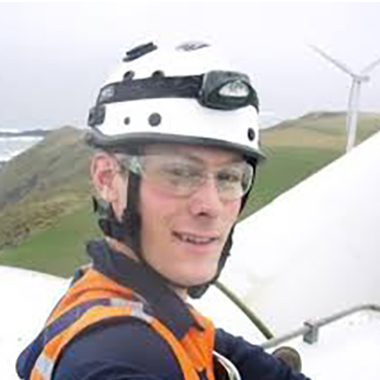Simplicity and flexibility are the ‘name of the game,’ according to Dr. James Hamilton. As director of Renewable Ready and a research fellow at the University of Tasmania, he’s accrued a wealth of experience developing energy systems in remote, off-grid environments. Through these challenging projects, Dr. Hamilton has determined that diesel generators have tremendous potential for supporting high renewable energy penetrations when operated flexibly—and pairing these assets with renewable resources can be an effective strategy for reducing costs.
We spoke with Dr. Hamilton recently to learn more about the role of flexible diesel generation in hybrid systems as well as technology synergies and ways to improve renewable penetration for off-grid communities.

Microgrid News (MN): From your experience in Australia, what strategies do you feel are key for successful project implementation when pairing generation technologies in a hybrid off-grid system?
James Hamilton (JH): In the current climate—specifically with the immense interest in large battery integration—it is tempting for proponents to jump right in and develop high-penetration hybrid systems with all the latest technologies. However, in a lot of instances, this will expose the owner to considerable risk, given their lack of prior integration and operational experience.
The more seasoned developers instead approach integration as a staged exercise, used to progressively build confidence in the approach and technologies as they explore the project. In many cases, this will consist of low to medium levels of renewable penetration in advance of more ambitious targets and specifically reducing the complexity of the system.
Unfortunately, many development schedules are tied to grant-funding schemes which can unintentionally push proponents to adopt emergent technologies and aggressive development schedules. There are a number of approaches to mitigate such risk which are invaluable in delivering successful projects.
From the Australian experience, low-complexity approaches are most suited to remote and isolated deployment. This doesn’t mean systems are low-performance. Approaches such as flexible generation and load are very powerful, and able to achieve 50% renewable energy annual average penetration without storage. Rottnest Island is a great test case for this approach.
MN: In what ways does diesel generation support the integration of renewable resources?
JH: In many cases, the two technologies are seen as competitive and unsuited to pairing, but this only represents one possible generation scenario—and unfortunately the one which is most common across the industry. Diesel assets have significant potential to support high renewable energy penetrations if operated flexibly. Flexible operation includes the elimination of load limits permitting low-load operation, consideration for improved ramp response, and improved low load efficiency. There are a number of approaches applicable to legacy assets to improve their flexibility and make them ideal running mates to solar PV and wind generation.
Diesel engine manufacturers are slowly acknowledging this market and starting to warrant some of this application, which opens the door to wider adoption of the practices.
This style of hybrid operation represents an important transitional stepping stone to battery integration.
MN: Let’s talk about flexible diesel generation. How does dynamic loading support renewable integration?
JH: I answered some of this already, but to present some numbers: assets should offer as large a load range and as quick a response as possible. Diesel assets exist which are capable of operating from 0% to 130% of rated capacity—that’s almost twice the range of legacy assets. Understanding how this is achieved is invaluable in unlocking some of this potential for owner-operators. Diesel assets exist which can accept 100% step-load application within only a few seconds. Again, this is a very favorable technology to pair with solar and wind.
If your assets can do more of this, your system doesn’t require as much storage, so your capital costs are lower and you use a lot less fuel, so you have lower operational cost. Primarily we have to adjust attitudes toward how diesel assets are employed.
MN: How does flexible diesel generation impact energy storage?
Improved instantaneous renewable energy utilization reduces or eliminates storage. This is ideal for remote communities as storage is hard. Australian government support for testing of every major lithium residential storage system in the market has shown a concerning high failure rate, which talks to the emerging nature of this technology. If you operate storage you have to understand where it is on the experience curve, and if you aren’t in a position to accept this risk, flexible thermal generation can be a useful substitute.
MN: What do you see as the path forward for renewable generation in off-grid communities?
JH: More reliability, efficiency, and affordable storage. We’ll undoubtedly see this in the future. We’re just not there yet.
To gain deeper insight into strategies for remote, off-grid systems and technology synergies such as those outlined here, please watch on-demand presentations from thought leaders at the 8th Annual HOMER International Microgrid Conference at https://microgridconference.com/resources-access-request. The event attracted a record number of attendees from 136 countries October 12-16, 2020. For more information, please read the conference wrap-up story or visit the conference website: microgridconference.com.
Dr. James Hamilton presented Technology Progression within Five Australian Off-grid Power Systems 2000-2020 during a session dedicated to Energy for Islanded Communities: Challenges & Solutions, on October 15, 2020, from 9:00 am to 11:00 am.

https://www.hydro.com.au/clean-energy/hybrid-energy-solutions/success-stories/rottnest-island